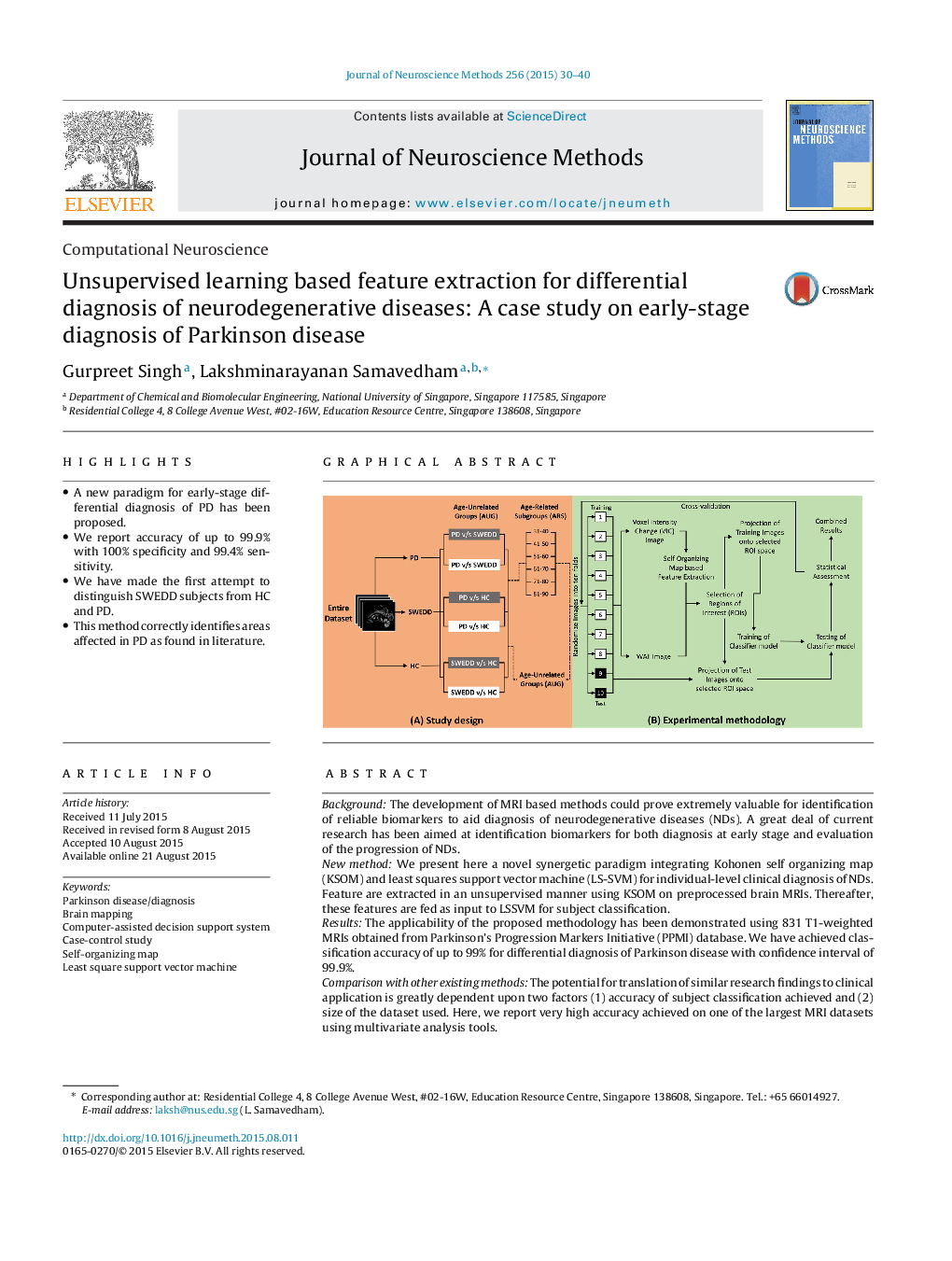| کد مقاله | کد نشریه | سال انتشار | مقاله انگلیسی | نسخه تمام متن |
|---|---|---|---|---|
| 6268119 | 1614613 | 2015 | 11 صفحه PDF | دانلود رایگان |
- A new paradigm for early-stage differential diagnosis of PD has been proposed.
- We report accuracy of up to 99.9% with 100% specificity and 99.4% sensitivity.
- We have made the first attempt to distinguish SWEDD subjects from HC and PD.
- This method correctly identifies areas affected in PD as found in literature.
BackgroundThe development of MRI based methods could prove extremely valuable for identification of reliable biomarkers to aid diagnosis of neurodegenerative diseases (NDs). A great deal of current research has been aimed at identification biomarkers for both diagnosis at early stage and evaluation of the progression of NDs.New methodWe present here a novel synergetic paradigm integrating Kohonen self organizing map (KSOM) and least squares support vector machine (LS-SVM) for individual-level clinical diagnosis of NDs. Feature are extracted in an unsupervised manner using KSOM on preprocessed brain MRIs. Thereafter, these features are fed as input to LSSVM for subject classification.ResultsThe applicability of the proposed methodology has been demonstrated using 831 T1-weighted MRIs obtained from Parkinson's Progression Markers Initiative (PPMI) database. We have achieved classification accuracy of up to 99% for differential diagnosis of Parkinson disease with confidence interval of 99.9%.Comparison with other existing methodsThe potential for translation of similar research findings to clinical application is greatly dependent upon two factors (1) accuracy of subject classification achieved and (2) size of the dataset used. Here, we report very high accuracy achieved on one of the largest MRI datasets using multivariate analysis tools.ConclusionsIn this paper, we describe a methodology that has the potential to be translated into first-line diagnostic tool for NDs. We also demonstrate the applicability of this methodology for diagnosing PD subjects in early stages of the disease, i.e., subjects in age of 31-60 years.
206
Journal: Journal of Neuroscience Methods - Volume 256, 30 December 2015, Pages 30-40
